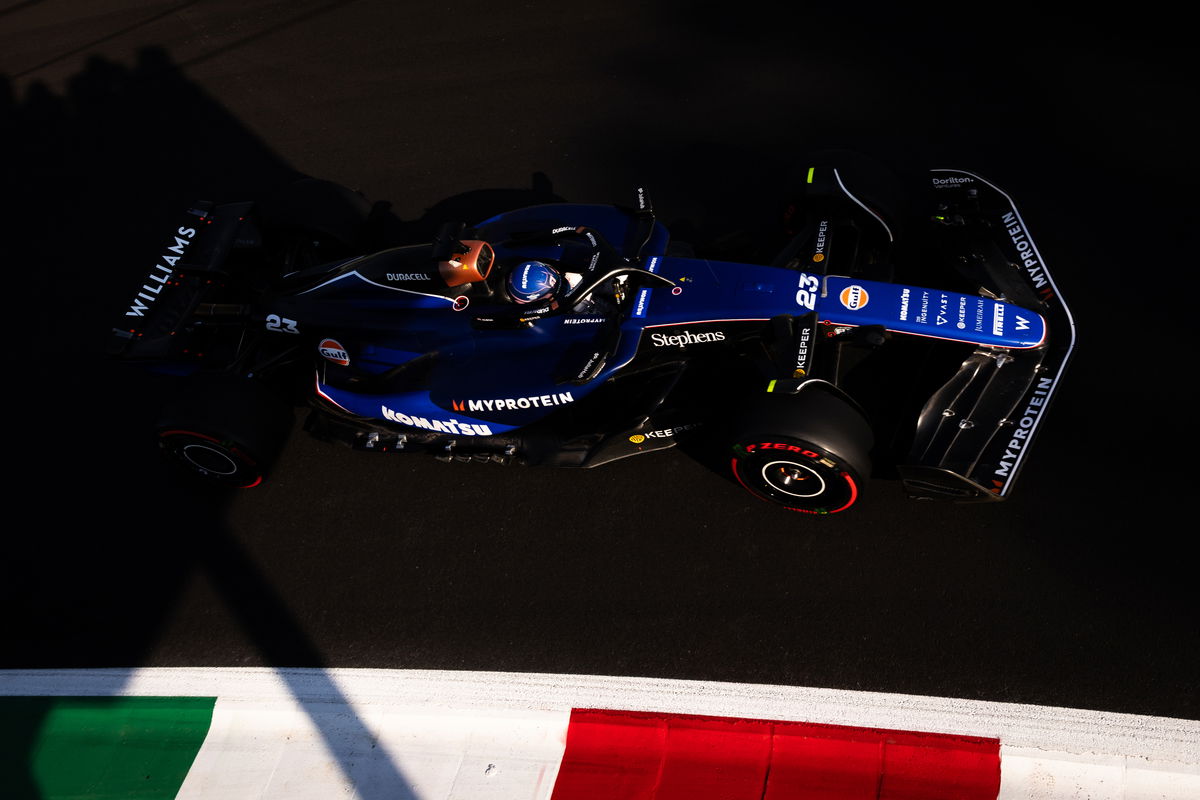

Williams’ financial position worsened with significant drops in revenue leading to a worsening bottom line.
It recorded a net revenue of AUD $243.42 million (£126.97m), down from AUD $273.87 million the previous year.
The reduction in revenue was further hit by increased costs, which surged from AUD $259.86 million in 2022 to AUD $309 million in 2023.
That translated into a gross operating loss of AUD $153.95 million (£80.298) and a post-tax loss of AUD $161.59 million (£84.286m).
For the year ending 2022, Williams recorded a loss of AUD $34.31 million (£17.894m).
It left the team’s accounts AUD $127.29 million worse off at the end of 2023.
Multiple factors contributed to that result, not least of which were the reduced prize money payments from Formula 1.
Having finished last in the championship in 2022 the squad was paid the least of all 10 teams on the grid throughout 2023.
In 2021, Williams was eighth in the teams’ standings, which brought with it improved prize money payments through 2022.
There were also increased payments due to creditors, with liabilities of AUD $127.94 million—the sharpest increase was due to accruals, which totalled AUD $76.64 million (up from AUD $38.1 million in 2022).
The team’s headcount remained largely stable, rising from 809 to 845, the bulk of those categorised as ‘research and development’.
However, wage costs increased by 10 percent, with the squad’s average salary rising from £78,000 to £85,500.
More on Williams
👉 Williams boss issues brutal Mick Schumacher assessment
👉 Williams axes Sargeant, debutant Colapinto to see out season
👉 Williams boss expects team to go backwards despite Sainz arrival
“While losses have increased compared with 2022, this is in line with expectations and the Company’s strategy to continue investing in all areas of the business to drive both on-track and commercial performance in pursuit of success in the medium and long-term,” noted team director Matthew Savage in the report.
“Revenue was lower in 2023 as a result of lower commercial rights revenue associated with finishing 10th in the 2022 constructors’ championship (2021: 8th).
“The balance sheet remains strong with net assets of £67.3m as at 31 December 2023 (2022: £116.4m), providing a sound financial base on which to continue the team’s long term strategy of returning to the front of the grid and being financially sustainable.”
Williams team principal James Vowles has spoken of his focus on the medium to long term position of the organisation, admitting that it will likely come with sacrifices in the short term.
Its financial position is part of that as the organisation invests in areas that have been under-resourced in recent years, as allowed under the sport’s financial regulations (which limit capital expenditure).
“When I joined, and still today for that matter, we’re still behind,” Vowles told Speedcafe in a January episode of the KTM Summer Grill.
“There’s no doubt about it, the infrastructure we have here is 20 years out of date.
“I’ve been pretty vocal and public on it for good reason, because I wanted to make sure we start to invest in this site.
“Now, there’s some good, lovely things in the sport, and one of them is cost cap. There’s an operational cost cap, and a capital expenditure cost cap.
“It’s awfully complicated but the operation one is basically the salaries and building of the car, and that’s a really good cost cap.
“That’s why the sport is getting better, in my opinion, and the teams are getting closer together.
“The second cost cap is a capital expenditure, and what that means is any machines or large infrastructure you’re keeping for multiple years, that also gets restrained, fundamentally.
“Again, it’s a good thing but it does hurt organisations like ourselves that have infrastructure that my CFO described as from the Ming Dynasty.”
Amendments to the capital expenditure elements of the cost cap have been introduced in an effort to further level the playing field now teams are increasingly in a position to invest, with Williams understood to have been afforded the right to spend an additional USD $20 million.
While a significant amount of money, it is well short of what Vowles believes the team needs to catch up.
“Unfortunately, in Formula 1, the amount of money we really needed here to catch up to the front is about $150 million,” he confessed.
“So it helps, but it scratches the surface, is the truth behind it.”
As such, Williams’ losses are expected to continue for some time, though its 2024 position is expected to improve given it finished seventh in the constructors’ championship last year, meaning it has received increased prize money payments this year.






















Discussion about this post